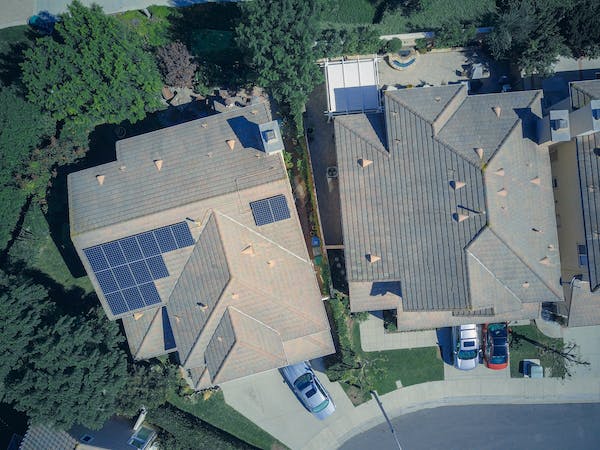The Pros and Cons of Solar Power: What Are the Benefits and Drawbacks?
The pros and cons of solar power have become a hot topic of debate as more and more people become aware of the potential for renewable energy sources to reduce our reliance on fossil fuels. On the one hand, solar energy has the potential to provide a virtually limitless source of clean and renewable energy. On the other hand, there are some drawbacks to be aware of.
The primary benefit of solar power is that it is a clean and renewable source of energy. Solar power does not emit any pollutants into the environment, unlike traditional energy sources such as coal and oil, and it has the potential to provide enough energy to meet our growing demand. Additionally, solar power can provide reliable energy even when the sun isn’t shining, as solar energy can be stored in batteries for later use.
However, there are some drawbacks to solar power. One of the biggest drawbacks is the high cost of installation and maintenance. Solar panels are expensive to purchase and install, and they require regular maintenance in order to remain efficient. Additionally, solar energy is not always available, as it is dependent on the sun’s position and the availability of sunlight in an area. Finally, solar energy is often unable to provide enough energy to meet the demand in areas with high energy consumption.
Overall, solar power has the potential to provide a renewable and clean source of energy, but it has its drawbacks. Before making the decision to invest in solar power, it is important to weigh the pros and cons and determine if it is the right choice for your needs.
Designing the Solar Energy Grid: Assessing the Latest Technologies
The sun gives us a tremendous source of energy, and solar energy grid technology is one of the most promising ways to use this natural resource. As the technology continues to evolve, so do the opportunities for harnessing the sun’s rays. By assessing the latest solar energy grid technologies, we can make the most of this renewable energy source and potentially create a more sustainable future.
One of the latest solar energy grid technologies is a hybrid system that combines photovoltaic cells with a battery storage system. This combination allows for greater efficiency in capturing and storing solar energy. Photovoltaic cells convert the sun’s rays into electricity, while the battery storage system keeps the solar energy stored until it is ready to be used. This hybrid system is capable of capturing and storing more solar energy than traditional solar panels, allowing for greater efficiency in converting and utilizing the energy.
Another solar energy grid technology is the use of microinverters. These small devices are installed on each solar panel or module in order to maximize the energy efficiency of the system. Microinverters convert the direct current (DC) generated by the solar panel into alternating current (AC). This is important because most homes and businesses use AC. Converting the DC into AC makes the solar energy more efficient and easier to use.
In addition, smart solar inverters are becoming increasingly popular. These devices are connected to the home’s energy grid and can help balance the electricity supply and demand. Smart inverters use artificial intelligence to monitor the energy needs of the home and adjust the solar energy production accordingly. This helps reduce peak demand and ensures that the home is taking full advantage of solar energy.
Finally, the latest solar energy grid technologies also include solar trackers. These devices use sensors to track the sun’s position throughout the day and adjust the angle of the solar panel to ensure maximum exposure to sunlight. This greatly increases the efficiency of the solar energy system and allows for more effective use of the available solar energy.
As the technology continues to evolve, solar energy grid technologies will no doubt become even more efficient and cost effective. By assessing the latest developments in this field, we can make sure that we are utilizing the sun’s energy to its fullest potential. With the right tools, we can create a greener future for generations to come.
Exploring the Potential of Solar Power for Developing Nations
The sun is a source of energy that is available to all nations, regardless of their level of development. Solar power is a renewable energy source that has the potential to have a significant impact in terms of providing energy access to developing nations. Solar power can provide the necessary power to help spur economic growth, create jobs, and improve the standard of living for those living in poverty.
Solar technology has advanced significantly in recent years, making it more cost-effective and reliable than ever before. Solar panels can now be installed on rooftops, providing clean, reliable energy to homes and businesses. This eliminates the need for costly and polluting diesel generators, and helps to reduce emissions of greenhouse gases. Solar energy can also be stored in batteries, providing a reliable source of power even when the sun is not shining.
Solar power is particularly well-suited to rural areas in developing nations, where access to the electrical grid is often lacking. Solar can be used to power small-scale businesses, farms, and even medical clinics, providing much needed services and opportunities to communities that lack access to traditional energy sources.
Solar power is also a great way to reduce dependence on fossil fuels, which are often expensive and cause environmental damage. Solar energy is free, abundant, and clean, and does not contribute to global warming or other environmental problems.
Ultimately, the potential of solar power for developing nations is immense. With the right investment and infrastructure, solar energy can be a game-changer for those living in poverty and an important part of the global transition to renewable energy sources.
The Economic Impact of Investing in Solar Energy
Investing in solar energy can have a tremendous economic impact, both in terms of job creation and cost savings. Solar energy is a renewable resource that is cleaner and more efficient than traditional fossil fuels like coal and natural gas. As the cost of solar continues to decrease, solar energy has become an increasingly attractive option for businesses and homeowners looking to reduce their energy bills.
On the job creation side, investing in solar energy creates a ripple effect throughout the economy. From the installation of solar panels to the manufacturing of components, the solar industry employs thousands of people, and those jobs have a positive effect on the local economy. In addition, the increased demand for solar power has spurred investment in research and development to make solar energy even more efficient and cost-effective.
The cost savings associated with solar energy can be significant. By installing solar panels, businesses and homeowners can reduce their energy costs by up to 70%. This can free up funds that can be used to invest in other areas of the business or to make improvements in other areas of the home.
Investing in solar energy is an investment in our future. Not only does it create jobs and save money, but it also helps protect the environment by reducing emissions of carbon dioxide and other pollutants. Solar energy is a renewable resource that will never run out, and it is becoming increasingly cost-competitive with traditional sources of energy. Investing in solar energy is an investment in our future that can have a positive economic impact now and for generations to come.
Exploring Innovative Ways of Harnessing Solar Energy for Everyday Use
The world is now turning to innovative ways to harness the power of the sun for everyday use. Solar energy is a clean, renewable, and abundant source of energy that can be used for a variety of applications. By utilizing the sun’s energy, we can reduce our dependence on fossil fuels and reduce greenhouse gas emissions.
One innovative way to use solar energy is to install solar panels on residential and commercial buildings. Solar panels can be used to generate electricity, providing clean, renewable energy to households and businesses. Solar panels can also be used to heat water for buildings, providing a much more efficient and cost-effective way to heat water than traditional gas or electric water heaters.
Another way to harness solar energy is through solar farms. Solar farms are large areas of land covered with solar panels, which are used to generate electricity. They can provide a clean, renewable source of energy to power homes and businesses. Solar farms also help reduce greenhouse gas emissions by providing renewable energy to the grid.
Solar energy can also be used to power vehicles. Electric vehicles are becoming increasingly popular, as they are more environmentally friendly than traditional gas-powered vehicles. Solar power can be used to charge electric vehicles, providing a clean, renewable source of energy for transportation.
Finally, solar energy can be used to power outdoor lighting. Solar-powered outdoor lighting is increasingly popular, as it is a cost-effective and environmentally friendly way to illuminate outdoor areas. Solar-powered lights can provide light in areas where traditional electricity sources are not available, such as remote areas or rural communities.
These are just a few of the innovative ways solar energy can be harnessed for everyday use. By utilizing the sun’s energy, we can reduce our dependence on fossil fuels and reduce greenhouse gas emissions while also providing clean, renewable energy for our everyday needs.






